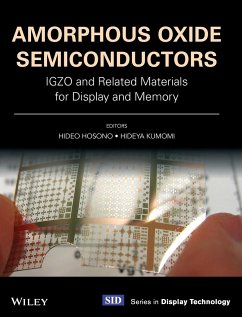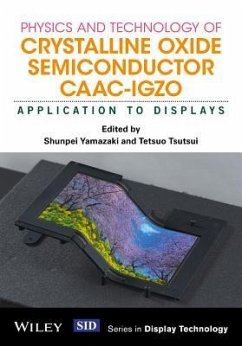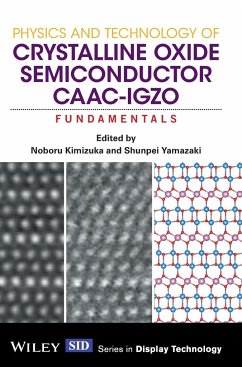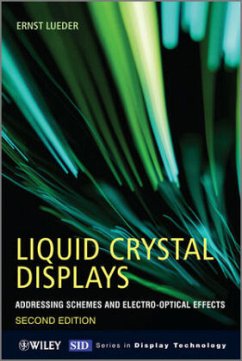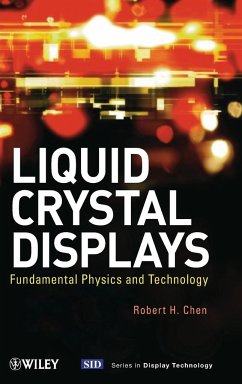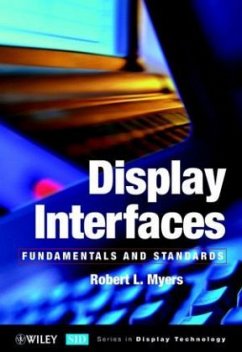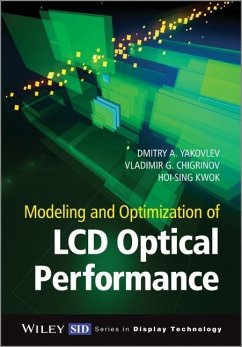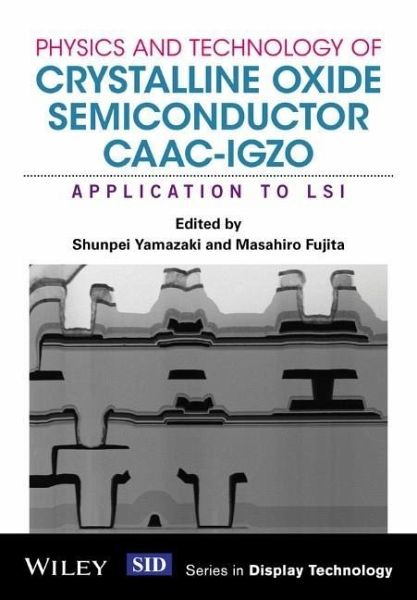
Physics and Technology of Crystalline Oxide Semiconductor Caac-Igzo
Application to Lsi
Herausgegeben: Yamazaki, Shunpei; Fujita, Masahiro
Versandkostenfrei!
Versandfertig in über 4 Wochen
110,99 €
inkl. MwSt.
Weitere Ausgaben:

PAYBACK Punkte
55 °P sammeln!
This book describes the application of c-axis aligned crystalline In-Ga-Zn oxide (CAAC-IGZO) technology in large-scale integration (LSI) circuits. The applications include Non-volatile Oxide Semiconductor Random Access Memory (NOSRAM), Dynamic Oxide Semiconductor Random Access Memory (DOSRAM), central processing unit (CPU), field-programmable gate array (FPGA), image sensors, and etc. The book also covers the device physics (e.g., off-state characteristics) of the CAAC-IGZO field effect transistors (FETs) and process technology for a hybrid structure of CAAC-IGZO and Si FETs. It explains an ex...
This book describes the application of c-axis aligned crystalline In-Ga-Zn oxide (CAAC-IGZO) technology in large-scale integration (LSI) circuits. The applications include Non-volatile Oxide Semiconductor Random Access Memory (NOSRAM), Dynamic Oxide Semiconductor Random Access Memory (DOSRAM), central processing unit (CPU), field-programmable gate array (FPGA), image sensors, and etc. The book also covers the device physics (e.g., off-state characteristics) of the CAAC-IGZO field effect transistors (FETs) and process technology for a hybrid structure of CAAC-IGZO and Si FETs. It explains an extremely low off-state current technology utilized in the LSI circuits, demonstrating reduced power consumption in LSI prototypes fabricated by the hybrid process. A further two books in the series will describe the fundamentals; and the specific application of CAAC-IGZO to LCD and OLED displays.
Key features:
_ Outlines the physics and characteristics of CAAC-IGZO FETs that contribute to favorable operations of LSI devices.
_ Explains the application of CAAC-IGZO to LSI devices, highlighting attributes including low off-state current, low power consumption, and excellent charge retention.
_ Describes the NOSRAM, DOSRAM, CPU, FPGA, image sensors, and etc., referring to prototype chips fabricated by a hybrid process of CAAC-IGZO and Si FETs.
Key features:
_ Outlines the physics and characteristics of CAAC-IGZO FETs that contribute to favorable operations of LSI devices.
_ Explains the application of CAAC-IGZO to LSI devices, highlighting attributes including low off-state current, low power consumption, and excellent charge retention.
_ Describes the NOSRAM, DOSRAM, CPU, FPGA, image sensors, and etc., referring to prototype chips fabricated by a hybrid process of CAAC-IGZO and Si FETs.




